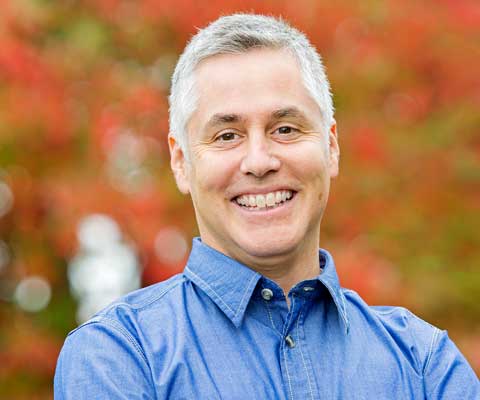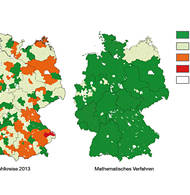It may be too soon to describe it as a fallback position but Canadian Prime Minister, Justin Trudeau, seems to return to science when he wants to generate or bask in positive news coverage. Coming off a not entirely successful state visit to India (February 17 – 23, 2018), he received some of the worst notices of his international diplomatic efforts to date. (This February 23, 2018 article, ‘India to Justin Trudeau: Stop trying so hard‘, by Vidhi Doshi for The Washington Post was one of the kinder pieces while this February 25, 2018 article, ‘Why Justin Trudeau’s India tour turned out to be a diplomatic disaster‘, by Candice Malcolm and published on economictimes.indiatimes.com was one of the more scathing.
Budget 2018: We’re in the money
The announcement of the federal budget (February 27, 2018) might be viewed as offering welcome relief from torrents of criticism. From a March 7, 2018 Canadian Science Policy Centre announcement (CSPC; received via email) about the publication of a series of opinion pieces (editorials) concerning the 2018 federal budget,
CSPC’s Official Statement on the Federal Budget 2018
Déclaration officielle du CPSC concernant le budget fédéral 2018Canadian Science Policy Centre commends the Government of Canada for the strong investment in Science projected in the Budget 2018 for the next five years. The Centre congratulates all Canadians, in particular members of the Fundamental Science Review Panel and the entire community who strongly supported the panel recommendations and the investment in Science.
Le Centre sur les politiques scientifiques canadiennes félicite le Gouvernement du Canada pour son investissement substantiel en sciences prévu dans le budget 2018 pour les cinq prochaines années. Le Centre félicite tous les Canadiens, plus particulièrement les membres du Comité de l’examen du soutien aux sciences ainsi que la communauté dans son ensemble, qui a vivement appuyé les recommandations du Comité et l’investissement en sciences.
You can find the editorials here (17 in total including an interview with Science Minister Kirsty Duncan … surprisingly[!!!!], she’s very proud of the government’s budget for science) along with editorials on other issues. Russ Roberts’ piece (Federal Budget 2018 – Missed Another Opportunity to Maximize ROI on Canadians’ Investments in Innovation) stands out as it is rather ‘grumpy’ but only in comparison to pretty much everyone else who is pleased to one degree or another.
The editorials put me in mind of an old song celebrating money in a Busby Berkeley production. Prepare yourself, over the top was where he liked to live,
Budget 2018: a little more nuance
Brooke Struck over on sciencemetrics.org offers some incisive analysis in two separate blog postings. First, he tackles the money in a February 28, 2018 posting (Note: Links have been removed),
…
The Naylor report [links to my 3-part series on the report also known as, INVESTING IN CANADA’S FUTURE; Strengthening the Foundations of Canadian Research {Review of fundamental research final report} follow at the end of this posting] contained many recommendations, but the one that got the most press—and surely is the focus of attention right now, given the release of the budget yesterday—is the recommendation that funding for the three granting councils be increased. The amounts were quite high, too, calling for an increase from $3.5 billion to $4.8 billion to remediate slides over the decade of the previous government’s term.
The timing of the report’s release was wise, as a release before that year’s budget might have created the expectation that the money would flow immediately, which simply doesn’t fit with the timelines of federal budget development processes. From April 2017 to now, the research community in Canada has rallied around the report and its recommendations, sustaining a campaign to keep research (and its funding) in the national discussion.
One note that the panel emphasized was that the Social Sciences and Humanities Research Council (SSHRC) had been hit particularly hard. The rule of thumb is apparently that SSHRC is supposed to get 20% of the total granting council budget, while 40% goes to the natural sciences & engineering [Natural Sciences and Engineering Council] (NSERC) and 40% goes to health research [Canadian Institutes of Health Research] (CIHR). SSHRC’s portion had consistently clocked in at around 15%.
Furthermore, the report emphasized that the underlying reasoning behind the 40-40-20 split might not hold water anymore, as the social sciences and humanities really don’t have any other major sources of funding beyond government support, whereas other types of research can draw on support from other players as well. The 40-40-20 split from government is not a 40-40-20 split in practice once additional sources are considered in the equation.
Delivery: as promised?
And that brings us to yesterday’s budget. While the report had called for an injection of $1.3 billion, the finance minister apparently couldn’t scrape together more than a measly $925 million—which, of course, is a huge amount of money. Some will lament the gap and rend their shirts in twain about promises broken, while others will cheer the victory of science retaking its rightful place through another #PromiseKept. That increase translated into a 25% bump in fundamental research spending, so I guess how you feel about it depends on your views about how much a 25% increase really means. For those keeping score at home, that apparently closes the gap to about 90% of real spending power levels before the slides under Harper.
But was it a 25% increase for everyone? No, the $925 million was not split evenly between the councils. Identical portions of $354.7 million will go to NSERC and CIHR (roughly 38% each from the new money) while $215.5 million will go to SSHRC (just over 23% of the new money). Comparing their funding levels this morning to those of yesterday morning, NSERC and CIHR saw increases of about 20%–25%, while SSHRC saw an increase of over 40%.
But did the government really heed the advice of their panel about getting back to the 40-40-20 allocation across the councils (while acknowledging that even that split is perhaps not sufficient anymore)? With its increase, SSHRC will be up from 15% of the tri-council total to about 16.5% of the total. That sounds like progress.
On the flip side, though, the government has just announced a massive injection to research spending, with an ongoing annual increase after that (following the same split as the one-time boost). No further increases are likely to happen again in the near future, and it would take three more increases just like this one for SSHRC to reach its 20%. The social sciences and humanities have made some headway, but they aren’t likely to get any closer than this to their 20%. The big investment has been made, and this will be the status quo for a while—consider that the Naylor panel was the first of its kind in 40 years.
…
I don’t think this excerpt does justice to Struck’s posting and recommend you read it in its entirety if you have the time and there’s this March 8, 2018 posting where he examines ‘evidence’ in relation to the budget (Note: Links have been removed),
The new budget provides a lot of money for science. It also emphasizes the importance of evidence-based decision-making to government, employing the term “evidence-based” about 20 times in the document. A lot of the new science money is earmarked to increase science for policy as well, separate from the fundamental science funding we discussed last week.
For example, Statistics Canada will get millions of extra dollars, in one-time injections as well as increases to ongoing, regular operating budgets. Why? “Better data will… support [the Government’s] commitment to evidence-based policy-making.” (p. 187). There are also hundreds of millions of dollars for science conducted within the federal government: labs and facilities (p.83) as well as highlighted projects (e.g., ocean and freshwater surveillance, p. 98). Again, all this is on top of the $925 million for fundamental research outside of government, administered by the funding councils. All told, that’s a big boost for research.
What about the uptake of that research in decision-making? There’s a whole section in Chapter 2 entitled “Placing Evidence at the Centre of Program Evaluation and Design.” The result? Statistics Canada gets $1 million annually to “improve performance evaluations for innovation-related programs,” and the Treasury Board gets $2 million annually to build an internal team for innovation performance evaluation, drawing on (among other things) the StatsCan innovation data.
Beyond that, the previous budget outlined $2 million annually for the federal Chief Science Advisor and her secretariat. That outlay doesn’t mention improving evidence-based decision-making, though it’s a key part of the CSA’s mandate. Together, what we see here is that there’s a huge disparity between the new money being spent on research and data, and the new money being spent to develop “a strong culture of evidence-based decision-making” (Budget 2018, p. 276).
Reading between the line items
The funding disparity suggests that the government feels that evidence-based policymaking is hampered primarily by supply-side problems. If we just pushed more science in the front end, we’d get a better flow of evidence through the policymaking pipeline. There’s almost no money to patch up whatever holes there may be in that pipeline between the research money inputs and the better policy outputs.
…
This quality of analysis is what one would hope for from the Canadian Science Policy Centre (CSPC). Perhaps once their initial euphoria and back-patting has passed, the CSPC commentators will offer more nuanced takes on the budget.
Budget 2018: The good includes a new intellectual property strategy
First, there’s a lot to like in the 2018 budget as the CSPC folks noticed. Advancing gender equality, supporting innovation and business, supporting fundamental research through the tri-council agencies, and more are all to the good.
Surprisingly, no one else seems to have mentioned a new (?) intellectual property strategy introduced in the document (from Chapter 2: Progress; scroll down about 80% of the way, Note: The formatting has been changed),
Budget 2018 proposes measures in support of a new Intellectual Property Strategy to help Canadian entrepreneurs better understand and protect intellectual property, and get better access to shared intellectual property.
What Is a Patent Collective?
A Patent Collective is a way for firms to share, generate, and license or purchase intellectual property. The collective approach is intended to help Canadian firms ensure a global “freedom to operate”, mitigate the risk of infringing a patent, and aid in the defence of a patent infringement suit.Budget 2018 proposes to invest $85.3 million over five years, starting in 2018–19, with $10 million per year ongoing, in support of the strategy. The Minister of Innovation, Science and Economic Development will bring forward the full details of the strategy in the coming months, including the following initiatives to increase the intellectual property literacy of Canadian entrepreneurs, and to reduce costs and create incentives for Canadian businesses to leverage their intellectual property:
- To better enable firms to access and share intellectual property, the Government proposes to provide $30 million in 2019–20 to pilot a Patent Collective. This collective will work with Canada’s entrepreneurs to pool patents, so that small and medium-sized firms have better access to the critical intellectual property they need to grow their businesses.
- To support the development of intellectual property expertise and legal advice for Canada’s innovation community, the Government proposes to provide $21.5 million over five years, starting in 2018–19, to Innovation, Science and Economic Development Canada. This funding will improve access for Canadian entrepreneurs to intellectual property legal clinics at universities. It will also enable the creation of a team in the federal government to work with Canadian entrepreneurs to help them develop tailored strategies for using their intellectual property and expanding into international markets.
- To support strategic intellectual property tools that enable economic growth, Budget 2018 also proposes to provide $33.8 million over five years, starting in 2018–19, to Innovation, Science and Economic Development Canada, including $4.5 million for the creation of an intellectual property marketplace. This marketplace will be a one-stop, online listing of public sector-owned intellectual property available for licensing or sale to reduce transaction costs for businesses and researchers, and to improve Canadian entrepreneurs’ access to public sector-owned intellectual property.
The Government will also consider further measures, including through legislation, in support of the new intellectual property strategy.
Helping All Canadians Harness Intellectual Property
Intellectual property is one of our most valuable resources, and every Canadian business owner should understand how to protect and use it.To better understand what groups of Canadians are benefiting the most from intellectual property, Budget 2018 proposes to provide Statistics Canada with $2 million over three years to conduct an intellectual property awareness and use survey. This survey will help identify how Canadians understand and use intellectual property, including groups that have traditionally been less likely to use intellectual property, such as women and Indigenous entrepreneurs. The results of the survey should help the Government better meet the needs of these groups through education and awareness initiatives.
The Canadian Intellectual Property Office will also increase the number of education and awareness initiatives that are delivered in partnership with business, intermediaries and academia to ensure Canadians better understand, integrate and take advantage of intellectual property when building their business strategies. This will include targeted initiatives to support underrepresented groups.
Finally, Budget 2018 also proposes to invest $1 million over five years to enable representatives of Canada’s Indigenous Peoples to participate in discussions at the World Intellectual Property Organization related to traditional knowledge and traditional cultural expressions, an important form of intellectual property.
It’s not wholly clear what they mean by ‘intellectual property’. The focus seems to be on patents as they are the only intellectual property (as opposed to copyright and trademarks) singled out in the budget. As for how the ‘patent collective’ is going to meet all its objectives, this budget supplies no clarity on the matter. On the plus side, I’m glad to see that indigenous peoples’ knowledge is being acknowledged as “an important form of intellectual property” and I hope the discussions at the World Intellectual Property Organization are fruitful.
That said, it’s good to see the government adopting a fresh approach to the matter.
Budget 2018: Who’s watching over us?
Russ Roberts (CSPC editorial) makes an excellent point in his piece about getting some sort of return on investment (ROI) made by the Canadian government on behalf of its taxpayers. One note, the issue is not new and unique to this Liberal government. As far as I’m aware, there never has been any mechanism for determining whether taxpayers’ money has been well spent and other than knowing that insulin was a huge boon to the world and could be described as a great ROI. So, I’m not suggesting that everything has to be measured in dollars and cents but just that we occasionally give it some thought.
Another aspect I’d like to see considered is oversight. In my March 5, 2018 posting I posed a question, What is happening with Alberta’s (Canada) Ingenuity Lab? In sum, Dr. Carlo Montemagno came to Alberta to head up the lab which is funded to the tune of $100M over 10 years. He was making over $500,000/year when he left some five years into the project to become Chancellor at Southern Illinois University (SIU). I had some questions about Montemagno’s tenure in Alberta. For example, was hiring his daughter and son-in-law (as he did again at SIU where he has received severe criticism) to work at the Ingenuity Lab a good idea? It may have been but it seems as if the question was never asked. Other questions also present themselves such as, what is happening to an industrial pilot project on carbon transformation that Montemagno touted?
Increasingly, I’m wondering what sort of oversight these heavily funded science projects are receiving, especially in light of the government’s massive foul up over the Phoenix pay system for federal government employees. (I’m aware that I’m conflating science and technology.) We’re entering the third year of a botched (a very polite term) and increasingly expensive payroll technology implementation. Take for example this recommendation from the Canada Treasury Board’s Lessons Learned from the Transformation of Pay Administration Initiative webpage which has me shaking my head,
Fully test the IT Solution before launch
Lesson 14: Launch any required new IT solution only after it has been fully tested with end-to-end real-life simulations using a broad spectrum of real users and when all doubts regarding success have been addressed and verified independently.
The federal government has over 300,000 employees whose payroll was migrated to this system and they didn’t test it (!) or so I infer from this recommendation. (According to a CBC [Canadian Broadcasting Corporation] news online August 24, 2017 news item, a little over 1/2 of Canada’s federal public servants have been affected,
Nearly one in every two federal public servants paid through the problem-plagued Phoenix system has opened a file seeking redress for a pay issue, CBC News has learned.
As of Aug. 8 [2017], there were 156,035 employees who had been waiting at least 30 days to have their pay complaint dealt with, according to data released to Radio-Canada by a government source.
That number represents nearly one-half of the 313,734 public servants paid through Phoenix. It’s also the first instance in which the scope of the Phoenix payroll issues has been laid clear in terms of people affected, rather than in terms of “transactions” or “cases.”
The documents show the government has been tracking the numbers of individuals affected by Phoenix since at least June 26 [2017].
“It’s shocking that we’ve just learned that they were hiding those numbers, because they didn’t want to show how big that catastrophe is for our public servants,” said Alexandre Boulerice, the NDP’s [New Democratic Party] finance critic.
…
Interestingly, the government is hoping to introduce more technology into their governance. Michael Karlin’s (@supergovernance) Twitter feed and his latest essay provide some insight into the government’s preparations for the introduction of artificial intelligence (AI), Note: Links have been removed,
Towards Rules for Automation in Government
Caveat: This is a personal view of work underway that I’m leading. What I describe is subject to incredible change as this policy work winds its way through government and consultations. Our approach may change for reasons that I’m simply not privy to, and that’s fine. This is meant to solicit ideas, but also show the complexity about what it takes to make policy. I hope that people find it useful, particularly students of public admin. It also represents my view of the world only, and neither my organization’s or the Government of Canada writ large.
…
AI is a rapidly evolving space, and trying to create rules in a time of disruption is risky. Too severe and innovation can be hindered; this is unacceptable during a time when the Government of Canada is embracing digital culture. On the other hand, if the rules don’t have meaning and teeth, and Canadians will not be sufficiently protected from the negative outcomes of this technology, like this or this. Trying to strike the right balance between facilitating innovation while being protective of right is a challenge, and one that benefits from ongoing discussions with different sectors across the country. It also means that I might work hard to build a consensus around a set of rules that we try out and have to scrap and redesign after a year in deployment because they don’t work.
…
Let’s not forget the 2017 Canadian federal budget introduced funding ($125M) for a Pan-Canadian Artificial Intelligence Strategy to be administered by the Canadian Institute for Advanced Research (CIFAR). So, federal funding for science is often intimately linked to technology., hence the conflation.
Sunny ways: a discussion between Justin Trudeau and Bill Nye
Billed as a discussion about the Canadian federal 2018 budget and science, Justin Trudeau sat down with Bill Nye, a US science popularizer and television personality on March 6, 2018 for about an hour. Kate Young, parliamentary secretary to the minister of science (Kirsty Duncan) was moderator.
As to be expected Bill Nye did not know much about the budget and the funding it provided for science, technology, research, and innovation but he was favourably impressed overall. In short, if you were looking for an incisive policy discussion, this was not the venue for it.
The conversation was quite genial throughout. Paul Wells in his March 6, 2018 article for Maclean’s offers a good summary of the main points and answers a few questions I had (for example, why a US television science personality?),
News of this bit of show-business [televised discussion] drew a fair bit of advance comment, most of it on Twitter on Monday night, some of it critical or worried. Some who don’t like Nye’s climate-change activism said he’s not a scientist. This is, by many definitions, true: He’s a mechanical engineer. I’m here to tell you that it’s hard to get a degree in mechanical engineering without learning some science, but for those inclined to draw distinctions, fill your boots. Others wished a Canadian scientist had been Trudeau’s chosen interlocutor, instead of some TV Yankee.
Part of the answer to that came from the U of O students, who were pleased to see the Prime Minister but plainly way more pleased to see Bill Nye the Science Guy. There simply isn’t a Canadian scientist (or science-friendly mechanical engineer) who would have provoked as much excitement. [emphasis mine; sadly true]
My own concern was that Nye, who has been critical of the Trump administration, might attempt to draw distinctions between the blackened anti-science hell-pit of his own country and the bright shiny city on a hill called Canada. Such distinctions would have been misinformed, for reasons I’ll explain in a bit, but in fact Nye mostly managed to avoid making them.
Mostly he and Trudeau just shot the breeze, in ways that were low on detail but not unpleasant.
One comment that Trudeau made raised a lot of interest on Paul Wells’ fTwitfer feed (#inklessPW), ‘all babies are scientists’. Wells’ notes where this idea likely originated (Note: A link has been removed),
The babies-are-scientists bit, I heard from a former New Brunswick education minister named Kelly Lamrock, could come from a book that was in vogue at about the time Trudeau was working as a schoolteacher, The Scientist in the Crib. To anyone who’s watched a toddler who was fascinated about dinosaurs grow into a teenager who couldn’t care less, Trudeau’s reverie makes sense as folk wisdom if not as a precise description of the scientific method.
There are also people who claim all babies are artists or musicians or mathematicians or … . Take your pick.
Wells goes on to highlight two female researchers (Trudeau being famously feminist and whose government just presented a budget boosting women) invited onstage to participate in the conversation (Note: Links have been removed),
… two young women researchers were invited onstage. Plainly their role was to be admired as pathbreaking young women researchers, pulverizing glass ceilings, embodying budget initiatives. To my relief, neither seemed interested in acting the part, or at least not in behaving as if sent straight from Central Casting.
Caitlin Miron from Queen’s University has already received some coverage for discovering a… thing… that could “switch off” cancer cells. This is how Miron was introduced. She could switch off cancer cells. It’s how Nye addressed her. You could switch off cancer cells! Miron answered, reasonably enough, that that’s how it might turn out someday, but that on the other hand it might not, and in the meantime she’s learning interesting new things about cancer cells. She was plainly flattered by the attention, but not interested in boiling her work down to slogans just yet.
Then the PM and the science guy turned to Ayda Elhage, who’s a PhD student in Chemistry at the University of Ottawa. Elhage, who was born in Lebanon, launched into a description of her work, which concentrates on (among other things) the tunable photocatalytic activity of palladium-decorated titanium dioxide [likely titanium dioxide nanoparticles]. I’m sure I don’t have to tell you how important this work is! At least I hope I don’t, because I understood almost none of it! I think it’s about complex new materials whose properties can be triggered by light. Or not. Anyway, the way she resisted any attempt to reduce her work to a gimmick or gadget was heartening to hear.
Wells winds up with this,
… the truth is that even now, today, in the second of the dark Trump years, the United States is far more of a performer in science research than Canada is. The U.S. National Institutes of Health have about 6 or 7 times the per-capita budget of the Canadian Institutes of Health Research; NASA and the National Science Foundation together spend about twice as much per capita as Canada’s Natural Science and Engineering Research Council.
The new investments in last week’s budget, while welcome, won’t change the orders of magnitude here. The U.S. commitment to science research is cultural and durable. The Trump White House’s call for cuts to granting agencies was met with budget increases to those agencies from Congress. Trudeau’s conversion to the cause comes after almost a year’s steady pressure from the Canadian research community. But I bet those researchers were heartened to hear Trudeau talking like one of them so soon after the budget came down.
Wells also covers their comments on support for fundamental research and a foray into the Kinder Morgan pipeline controversy.
From Wells’ Twitter feed (on the day of),
Paul WellsVerified account @InklessPW 2 hours ago
Nye asks Trudeau about “this pipeline, Morgan Kinder.” Uh oh.
Paul WellsVerified account @InklessPW 2 hours ago
Trudeau talks about “tremendous potential” for renewables. “However, we’re not going to get there tomorrow.” The has to be a “transition phase.”
Paul WellsVerified account @InklessPW 2 hours ago
This answer is longer than the Oscars.
Nye did not correctly identify the pipeline but he did comment on his visit to Fort McMurray. In any event, the Kinder Morgan portion of the discussion seemed scripted (to me), i.e, Trudeau knew the question was coming and was prepared for it. I’m guessing he also knew Nye was going to give him and his government a pass after hearing the reasons for their decision.
One question that I found interesting but not mentioned in Wells’ article was about language and the arts. It was neither Trudeau’s not Nye’s finest moment. They were clearly unable to shift gears, part of their problem being that much of what they discussed in terms of ‘baby scientists’ could also be said about the arts. Yes, all babies make art!
Final thoughts
As noted earlier, here’s a lot to applaud in the new budget, more support for fundamental research, catch up funding for the Social Sciences and Humanities Research Council, and greater support for women in the sciences and technology.
At the same time, I wish this government put more thought into how it’s spending taxpayers’ money.
Extras
For anyone who’s curious, you can find the full 2018 federal budget here and you’ll find the science funding in Chapter 2: Progress.
For the curious, you can watch the entire (!) Trudeau/Nye conversation, 1 hour, 9 minutes and 30 seconds here.
For anyone interested in the Naylor report (or my comments on it), there’s this three-part series:
- INVESTING IN CANADA’S FUTURE; Strengthening the Foundations of Canadian Research (Review of fundamental research final report): 1 of 3
- INVESTING IN CANADA’S FUTURE; Strengthening the Foundations of Canadian Research (Review of fundamental research final report): 2 of 3
- INVESTING IN CANADA’S FUTURE; Strengthening the Foundations of Canadian Research (Review of fundamental research final report): 3 of 3
For anyone who hasn’t been following the Canadian political scene, “sunny ways” is a term that Justin Trudeau uses to describe, in part, his political philosophy. Here’s an explanation of the term from the Liberal Party of Canada’s website,
Canadians have often heard Prime Minister Justin Trudeau speak of Sir Wilfrid Laurier’s [Canadian Prime Minister from 1896-1911] sunny ways – a guiding philosophy that both men share. Like Laurier, the Prime Minister knows that politics can be a positive and powerful force for change. …
Wilfrid Laurier’s appeal for the “sunny way” in political discourse has its roots in the Manitoba Schools Question. When Manitoba became a province in 1870, a dual school system was established to reflect the province’s Protestant and largely English-speaking population, and its Catholic and predominantly French-speaking, residents.
“The sun’s warm rays prove more effective than the wind’s bluster.”
By 1890, the Anglophone population widely outnumbered the Francophones. Seeking to appeal to this growing population, the provincial government of Thomas Greenway attempted to abolish the dual school system. With the support of the federal Conservative government, Manitoba’s Catholic community launched a court challenge of the school law. The Judicial Committee of the Privy Council ruled that while the law was valid, the federal government could restore public funding to denominational schools. In 1895, despite it being deeply divisive, Prime Minister Mackenzie Bowell introduced legislation to force Manitoba to restore Catholic schools – a measure that was then postponed due to severe opposition within his own cabinet, ultimately leading to his resignation.
In contrast to Bowell’s heavy-handed approach, Liberal Leader Wilfrid Laurier proposed that a diplomatic “sunny way” would work better, using as an illustration Aesop’s fable in which the sun and the wind hold a contest to see who can remove a traveler’s coat. The sun’s warm rays prove more effective than the wind’s bluster.
…
While more than 120 years have passed, Prime Minister Trudeau shares Laurier’s belief that the “sunny way” remains essential to solving the complex problems facing our country.
Trudeau seems to have had remarkable luck with his ‘sunny ways’ which sometimes seem more like a form of teflon coating than an approach to diplomacy as per Sir Wilfred Laurier. At other times, Trudeau appears to have a magic touch where diplomacy is concerned. He is famously able to deal with the volatile US President, Donald Trump.








